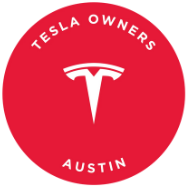The art of engaging in Man on the Street interviews is a unique skill that involves approaching strangers and striking up conversations about a variety of topics. This practice, as humorist Dave Barry once described, can be akin to “badgering” unsuspecting individuals into sharing their opinions. However, in the context of electric vehicle (EV) charging stations, these impromptu conversations can lead to insightful and interesting interactions.
Charging an EV can be a time-consuming process, with owners often spending at least 10 minutes, if not more, at a charging station. This presents a prime opportunity for engaging in conversations with fellow EV enthusiasts or curious onlookers. Whether discussing the state of non-Tesla charging infrastructure or showcasing a new and exotic EV model, these interactions can be both educational and entertaining.
One common theme that emerges from these conversations is the evolving demographic of EV owners. No longer limited to early adopters or tech-savvy individuals, the EV community now includes a diverse range of people who may not be well-versed in the technical aspects of EVs. This shift highlights the growing accessibility and appeal of EVs to a wider audience.
At a bustling Electrify America station in Providence, Rhode Island, I encountered Tim and Allyssa, a young couple with two toddlers, charging their Lucid Airs. Tim, a former skeptic of EVs, had a change of heart after experiencing the practicality and range of his Lucid. His positive experience speaks to the potential for widespread adoption of EVs once misconceptions are dispelled.
Further conversations with Xavier, a Kia EV6 owner without access to home charging, and a group of Uber drivers renting EVs for their rideshare business, shed light on the diverse ways in which people are embracing EV technology. From navigating charging challenges to leveraging EVs for income generation, these stories highlight the versatility and appeal of electric vehicles in various contexts.
As I observed a range of EV owners and enthusiasts at different charging stations, each with their unique stories and perspectives, it became evident that the transition to electric mobility is not just a technological shift but a cultural one as well. From the challenges of public charging infrastructure to the practical benefits of owning an EV, these interactions underscore the evolving landscape of transportation and the growing community of EV advocates.
In conclusion, the journey through EV charging stations offers a glimpse into the diverse and dynamic world of electric mobility. By engaging in conversations with owners, renters, and enthusiasts, we gain valuable insights into the challenges, triumphs, and experiences that define the EV landscape. As more individuals embrace electric vehicles and charging infrastructure continues to evolve, the future of clean and sustainable transportation looks brighter than ever.

